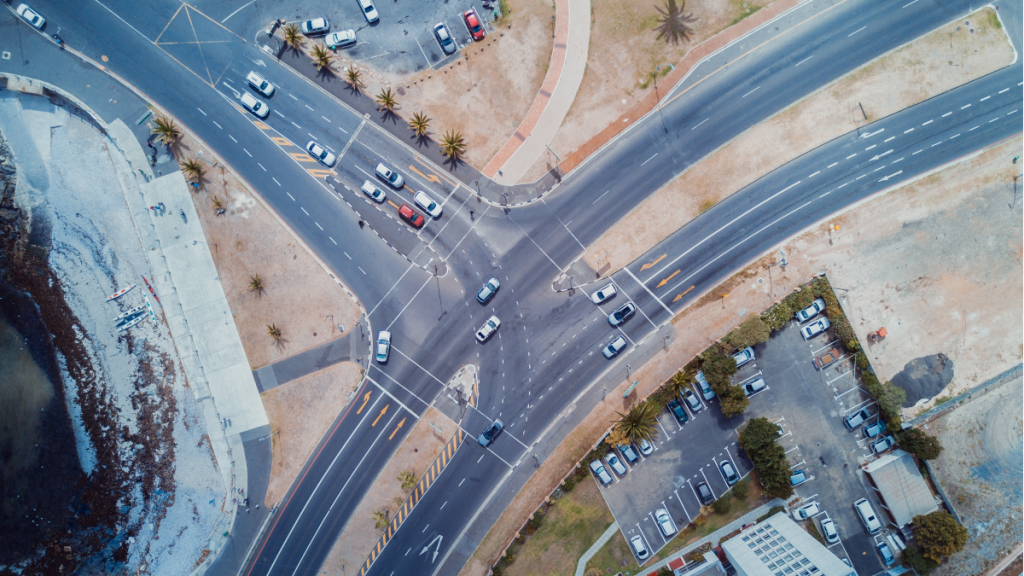In georeferenced images, actual image data – typically maps or aerial photos – is accompanied by geographical coordinates describing the map location and scale. When importing such images, RapidPlan is able to use the georeference data to work out the correct plan scale and automatically position the imported imagery to form an underlying base map. This allows incorporating map data exported from third party applications that support georeferenced formats, such as NearMap and MapInfo Pro.
Requirements
- RapidPlan version = 3.2
- Supported data formats: standard World File, MapInfo raster .TAB file
- Spatial reference: ESRI 102100/3857 (Web Mercator)
Importing via New Plan Wizard
In RapidPlan, go to File->New Plan Wizard. Select “Base map” as the plan type.

Click “Add files…” and select the images you want to import. Remember that you can only import images accompanied by georeference data, either in a World File format (for example for a .jpg image the corresponding world file will have a .jgw extension) or a MapInfo .TAB format. You can also select zip files that contain both the image and the georeference file (such as files exported from NearMap) – these will be extracted automatically.
The files you selected will appear on the scrollable list, displaying data extracted from the georeference file: location, scale and bearing. By checking the box on the right side of the list you can select which image is to be placed at the center of your plan. The selected image will also be used to preset the plan location, scale and bearing (other images will have their scale and rotation automatically adjusted to match).
Once you’ve selected the files, scroll up and click the “Next” button. In the second Wizard step you can confirm that your plan location and scale has been set correctly, then click “Create Plan”. The created plan will contain a dedicated “Georeferenced Images” layer with all the imported images automatically arranged to form a continuous base map.

Importing to an existing plan
Once you have created a base map plan using the New Plan Wizard you can add additional georeferenced images to it by clicking Tools->Import->Georeferenced images. Select the files you want to import and they will be laid out on the plan automatically, adjusted to match the plan scale and bearing. Note that the files you’re adding must cover areas adjacent to the plan location.
You can also import georeferenced images to blank canvas plans (for example blank plans created via File->New default plan). Such plans don’t have a scale and location set, so these values will be copied from the image(s) you’re importing.
Exporting images from third party applications
Exporting images from NearMap
In order to create georeferenced images from NearMap, open the NearMap viewer, navigate to your desired location and select the area you want to export. Click the Export button at the top, select “Georeferenced image” format and make sure the projection is set to “WSG84 / Spherical Mercator”. Click “Download files” – this will download a zipfile containing both the exported image and its georeference file. The zipfile can be imported to RapidPlan as described above (its contents will get extracted automatically). You can also export multiple adjacent areas into separate zipfiles, then import them into RapidPlan all together.

Exporting images from MapInfo Pro
In MapInfo Pro, navigate to the area you want to export and click Output->Save Image. In the options dialog, check the “Create a Geographically Referenced Tab File” box, then click Save. The image will be saved together with an accopmanying .TAB file, allowing it to be imported to RapidPlan as described above. You can also export multiple adjacent areas into separate files, then import them into RapidPlan all together.

Exporting images from Land Information New Zealand
To export georeferenced images from Land Information New Zealand (LINZ), visit the LINZ Data Service.
Note that you are required to sign up for a free account to download images for the data service. This can be done by clicking the Sign in button.
The service contains a number of datasets. Navigate to a region-specific dataset, or use the national imagery (NZ Aerial Imagery). Once you have chosen the dataset, enter the address of your work site. To export your image, use the following steps (note that each step corresponds with the number on the image below):
- Using the crop tool, select the map area you want to export
- Once the area is selected, click ‘Box crop’ which appears at the bottom of the map
- Your cropped image will then be available for download by clicking ‘Download or Order’
- An Export Options box will then appear. In the map projection drop down menu, select ‘WGS84 / Pseudo-Mercator’ (EPSG:3857)
- Then click ‘Accept terms and create download’. This will download a .ZIP file containing the georeferenced image files.

